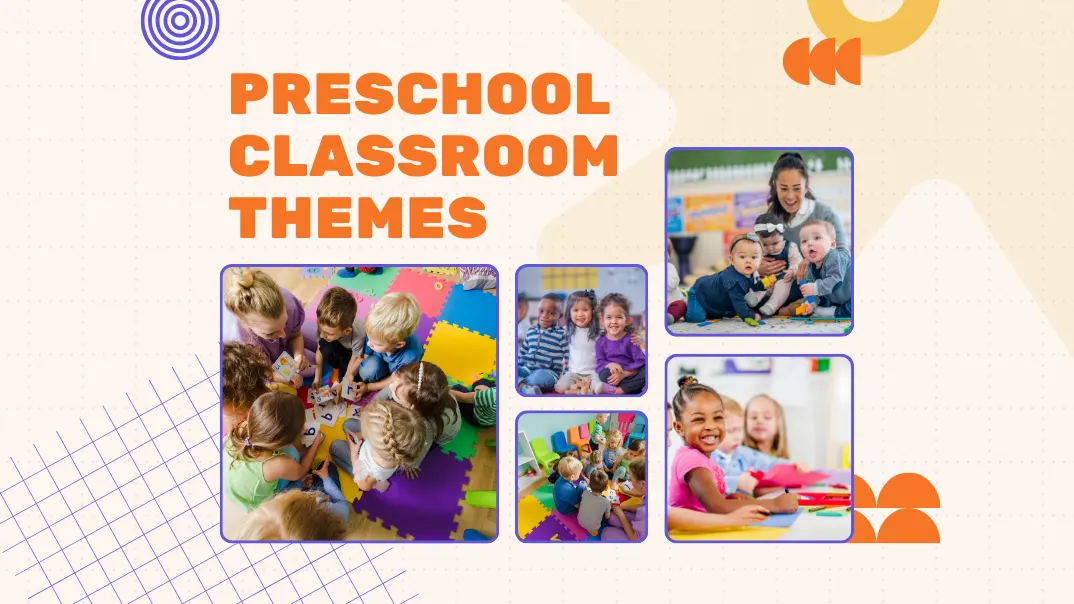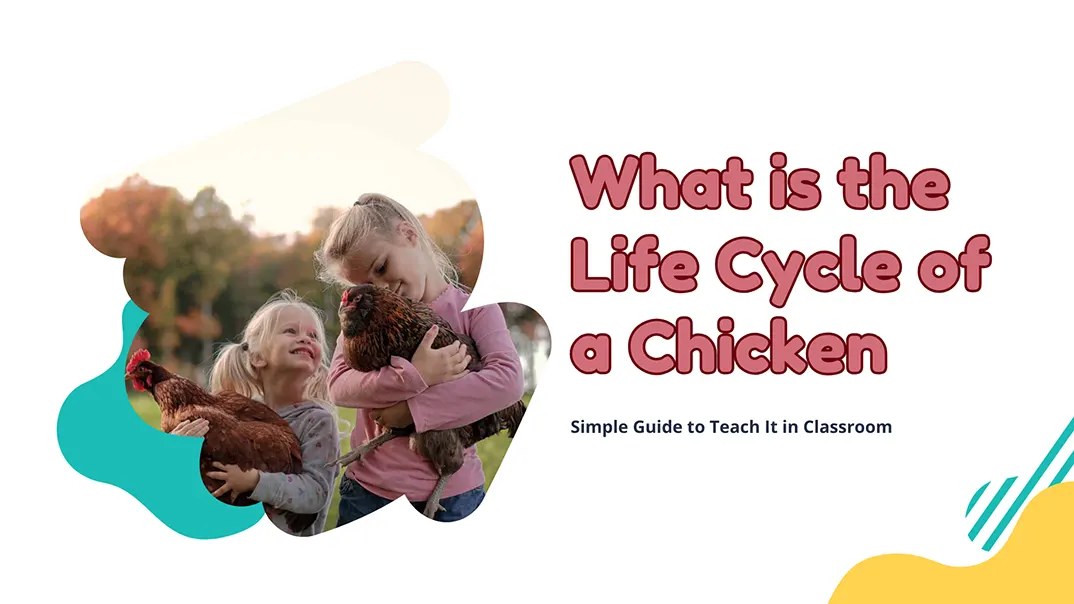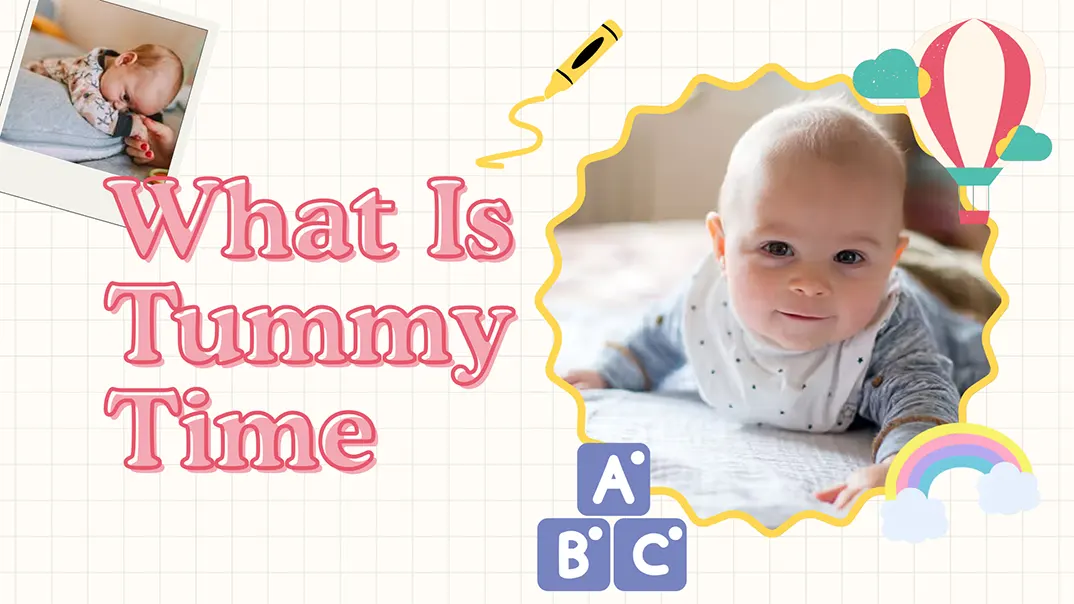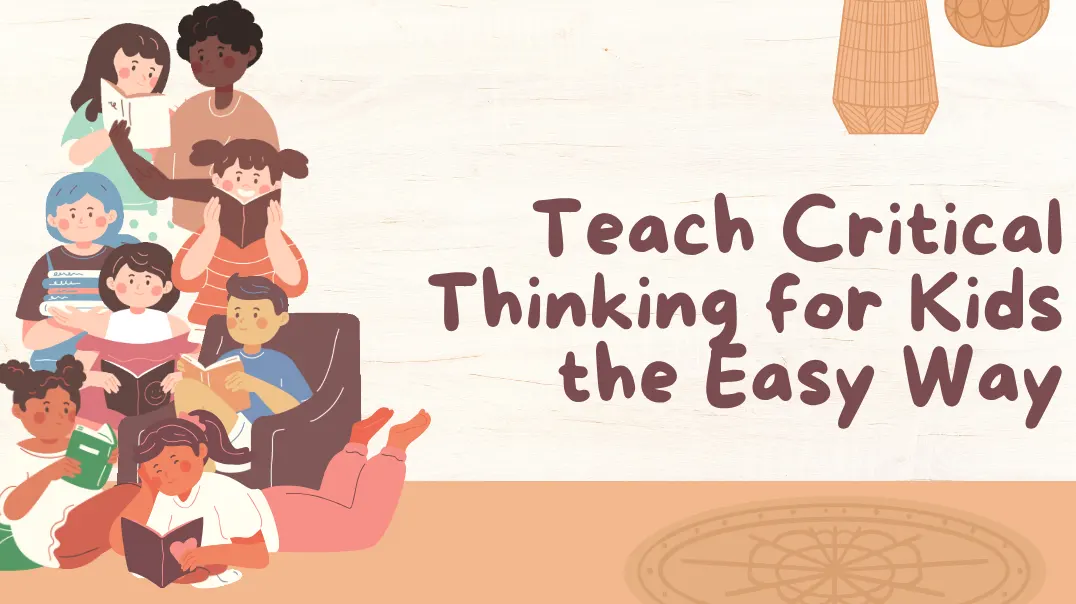Finding the right preschool classroom themes to engage young children is often challenging. With varied attention spans and interests, creating an environment that captures attention and encourages learning is essential. Without well-planned classroom themes for preschool, the learning experience may lack structure, engagement, and impact, leaving children less motivated to participate and learn.
Introducing captivating themes for preschool classrooms can make learning dynamic, immersive, and more memorable. With this list of preschool classroom theme ideas, teachers can create an engaging space that fosters curiosity and joy for learning.
Importance of Preschool Classroom Themes
Early childhood preschool classroom themes are essential for capturing students’ interest and fostering a love for learning. Let’s dive deeper into the benefits of integrating thoughtful, dynamic preschool classroom themes ideas in an early learning setting.

1. Stimulate Learning Enthusiasm
Themed classrooms like “Space Adventure” or “Under the Sea” provide a visual and interactive backdrop that encourages curiosity. Themes for preschool classrooms create enthusiasm by turning daily lessons into adventures, such as exploring planets or diving into the ocean. Engaging preschool classroom theme sets can transform a standard lesson plan into a fresh and exciting experience.
2. Develop Children’s Awareness
Themes like “Around the World” or “Rainforest Exploration” help children explore new ideas and cultures, fostering an understanding of diversity. Preschool classroom theme decoration can introduce early concepts of geography, nature, and global awareness, guiding children’s curiosity beyond their immediate environment.
3. Provide Different Learning Styles
Themes often incorporate varied preschool activities that cater to multiple learning styles. For instance, a “Garden of Growth” theme can include storytelling, hands-on planting, and sensory activities. This classroom decor theme for preschool allows each child to engage with the topic in their preferred way, be it visual, auditory, or kinesthetic, ensuring that the theme supports diverse learning needs.
Transform Your Classroom with Custom Furniture Solutions
4. Increase Participation
A well-chosen preschool classroom theme increases participation and encourages collaboration. With a theme like “Jungle Safari,” children can explore different animal habitats together, enhancing social skills and teamwork. This setup fosters a sense of belonging, essential for early childhood development.
5. Emotional Impact
Themes help create an emotionally comforting environment for young children. For example, a “Rainbow World” theme offers warm colors and familiar elements that feel welcoming. Such preschool classroom theme decorations offer emotional security and encourage children to feel comfortable, making them more open to exploring new ideas and activities.
Things to Note When Setting Preschool Classroom Themes
When creating a theme for a preschool classroom, educators should keep several factors in mind to ensure the themes are as effective and enjoyable as possible. Let’s look at some essential considerations.

- Educational Goals: Define the learning objectives you want to achieve with each theme. For example, a “Weather Wonders” theme could help children understand different weather patterns and explore simple science concepts. Thoughtful classroom theme ideas for preschool support curriculum goals in interactive and age-appropriate ways.
- Consider Students’ Interests: Observe what your students are naturally curious about to choose themes they’ll be excited to explore. An “African Safari” or “Farm Life” theme could be ideal if many children love animals. Tailoring daycare classroom theme ideas to student interests helps maintain engagement throughout the learning process.
- Season: Seasonal themes like “Winter Wonderland” or “Spring Blooms” can help children understand the concept of time and seasonal changes. Choosing kindergarten classroom themes that reflect the season can provide a sense of continuity and connect lessons to their everyday experiences.
- Age Appropriate: Preschool classroom themes should be easy for young children to understand and interact with. For example, “Outer Space” might introduce only the basics of the solar system rather than overwhelming details. This keeps the content engaging without making young children feel lost or frustrated.
- Flexibility: Flexible themes allow the classroom to evolve with students’ interests. A “Garden Adventure” might initially focus on flowers and later introduce butterflies and insects. Flexibility lets you modify activities as children’s interests develop.
- Safety: Safety should be a priority in every theme. For example, avoid small decorations in a “Pirate Treasure” theme that might pose choking hazards. Choose child-friendly materials and ensure all props and decor are securely fastened.
- Resource Availability: Before settling on a kindergarten-themed classroom, ensure you have access to the necessary materials. Some themes like “Under the Sea” may require significant classroom supplies, from posters to costume props. Plan your theme around accessible resources to make setup smoother.
Discover Our Full Range of Products
Get access to our comprehensive catalog featuring top-quality furniture and play equipment for kindergartens and schools.
What Is a Theme Unit?
A theme unit is an educational tool where all classroom activities revolve around a central theme. It includes structured lessons, art projects, and hands-on learning experiences designed to deepen children’s understanding of a particular topic. For instance, in a “Dinosaur Discovery” theme unit, educators can cover subjects like history, geography, and even simple counting. Organized around specific kindergarten theme ideas for the classroom, a theme unit helps children grasp concepts through consistent, cross-disciplinary exposure, making learning a natural, immersive experience.
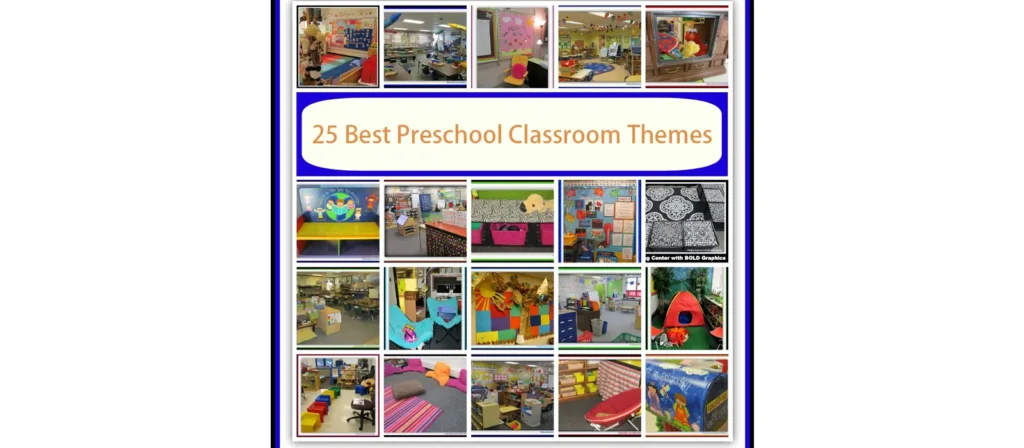
25 Best Preschool Classroom Themes
Below are 25 preschool classroom themes ideas to bring the classroom to life, promote active learning, and make every day a memorable adventure. Each theme is carefully designed to captivate, engage, and educate young learners.
1. Garden Adventure

Transform your classroom into a green oasis filled with plants, flowers, and butterflies. This nature-inspired theme is perfect for teaching about plant life cycles, insects, and seasons. Set up a “garden” with real or artificial plants where kids can plant, water, and watch seeds grow. For hands-on activities, consider crafts like paper flowers, butterfly cutouts, and learning stations where children observe and draw plants. This theme supports sensory learning, as children can touch, smell, and observe nature up close.
2. Rainforest Exploration

A rainforest theme brings the jungle into your classroom with hanging vines, animal posters, and rainforest sounds to create an immersive atmosphere. Teach children about the biodiversity of rainforests, introduce them to animals like toucans and monkeys, and explore the role of rainforests in the environment. Craft activities like making paper parrots or binoculars help children feel like real explorers. This theme reinforces environmental awareness and conservation concepts, all while adding a sense of adventure.
3. Under the Sea

Create a mini-ocean world with fish, coral reefs, and sea creatures, allowing children to dive into marine life. Decorate with shades of blue, fish cutouts, and bubble decorations for a realistic underwater look. Through this theme, kids can learn about ocean ecosystems, the different species of marine animals, and basic conservation principles. Hands-on activities could include creating fish from paper plates, learning about sea creatures through books, and engaging in water play with small aquatic toys.
4. Farm Life

Bring the countryside into the classroom with a farm theme where children can learn about animals, crops, and life on a farm. Set up mini “barn” corners and areas with artificial crops like corn and tomatoes. Activities can include matching animal sounds with pictures, making animal masks, and even a mock “harvest” activity where kids can pick toy vegetables. This theme is excellent for introducing children to food sources and agriculture.
5. Space Adventure
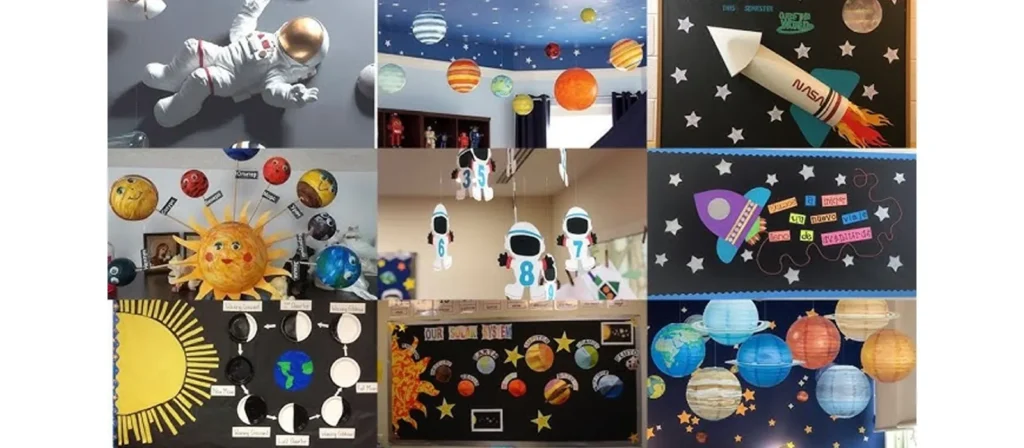
A space theme lets kids imagine life among the stars, planets, and galaxies. Decorate with images of planets, stars, and astronauts to create an out-of-this-world classroom. Children can learn the names of planets, the concept of gravity, and basic astronomy. Activities might include crafting “space helmets” from foil, building rockets with cardboard, and learning about constellations with glow-in-the-dark stars.
6. Dinosaur Discovery

Dinosaurs captivate young imaginations, and a dinosaur theme provides a playful way to teach history and science. Decorate with dinosaur posters, fossil displays, and prehistoric plants. Hands-on activities include “fossil digs” in sandbox areas, crafting dinosaur masks, and learning dinosaur names. This theme helps children understand the past and introduces them to basic concepts of paleontology.
7. Weather Wonders

Introduce children to different types of weather, including sunny, rainy, snowy, and windy days. Decorate with weather symbols like clouds, suns, and rainbows, and encourage kids to record daily weather observations on a classroom weather chart. Activities can include rain cloud experiments with shaving cream and food coloring, making sun and rainbow crafts, and discussing seasonal changes. This theme introduces science concepts in a hands-on way.
8. Around the World
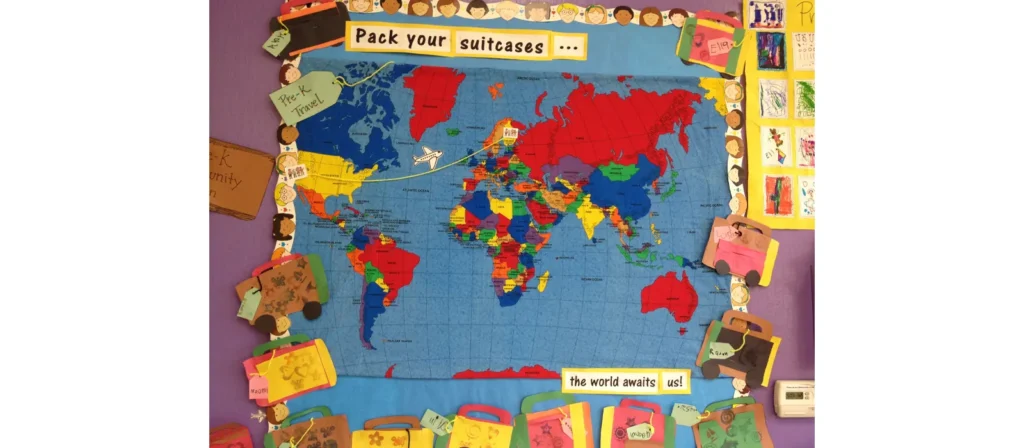
Take children on a virtual journey around the globe by introducing them to diverse cultures, languages, and foods. Display maps, flags, and pictures of landmarks from different countries. Kids can learn simple greetings in other languages, try traditional dances, and participate in cultural activities. Craft ideas might include making passports, creating flag collages, and drawing pictures of famous landmarks. This theme builds cultural awareness and promotes global understanding.
9. Ancient Egypt
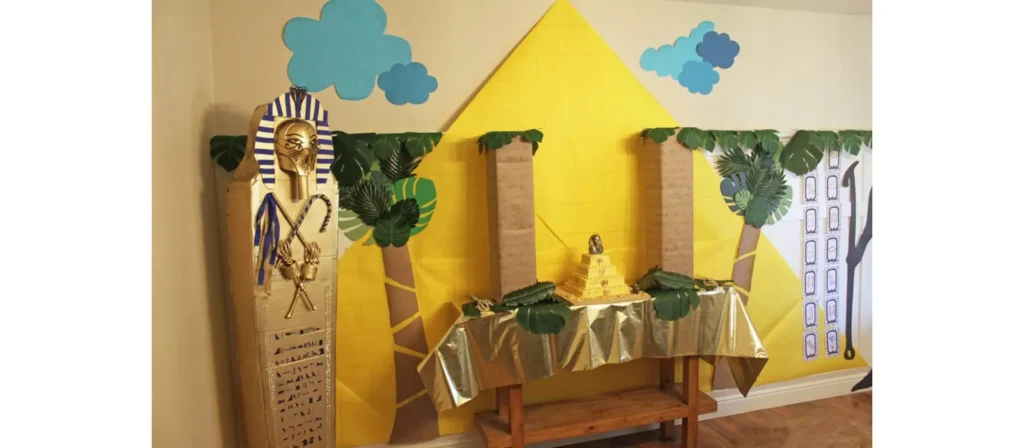
Ancient Egypt fascinates young children, and a classroom filled with pyramids, hieroglyphs, and “mummies” will spark curiosity about history. Kids can create their own “pyramids” with blocks, make Egyptian-inspired jewelry, and practice “writing” with hieroglyphics on paper. Sand bins and miniature pyramids enhance the experience, providing a tactile way to learn about archaeology and ancient civilizations.
10. African Safari
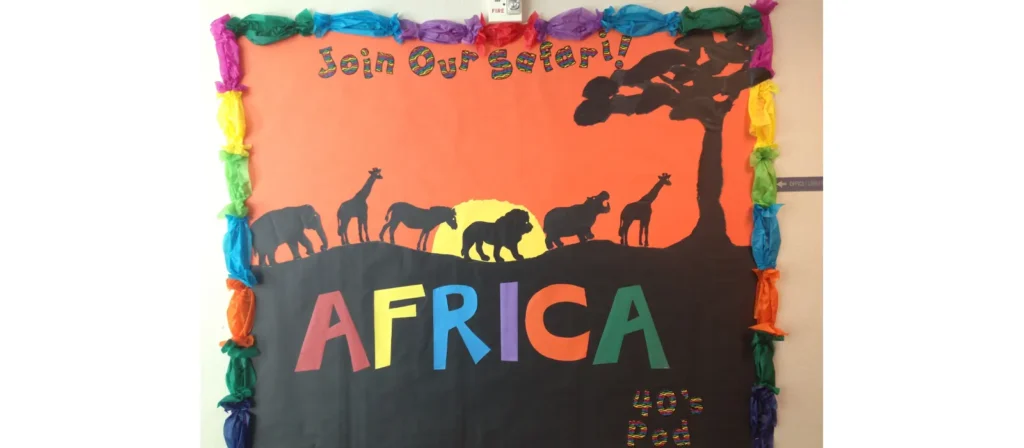
A safari theme introduces students to the animals and landscapes of Africa. Decorate with animal posters of elephants, lions, zebras, and plant and tree cutouts to mimic a savannah. Children can make animal masks, learn the sounds of different animals, and even practice counting with toy animals. Through this theme, students learn about wildlife, habitats, and the importance of conservation.
11. Winter Wonderland
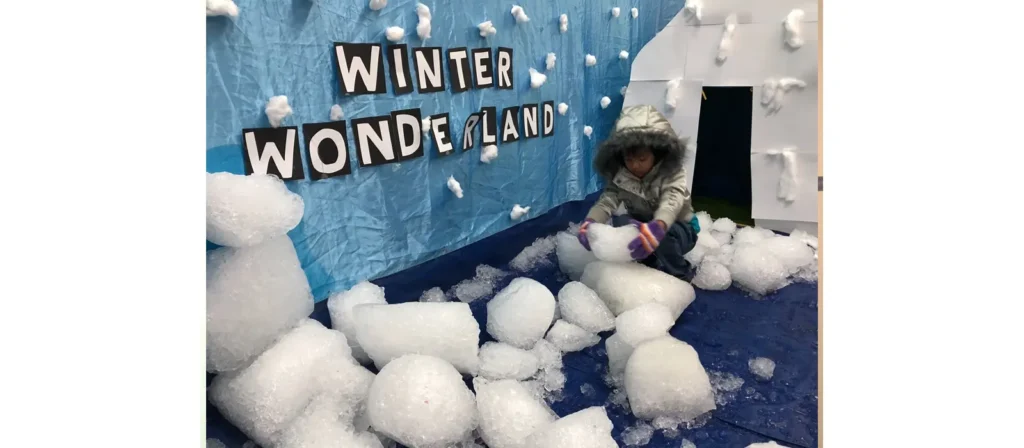
Celebrate the winter season with snowflakes, polar animals, and “icy” decor. This theme introduces children to winter weather, cold habitats, and seasonal changes. Decorate with paper snowflakes, white cotton, and winter animals like polar bears and penguins. Activities might include creating paper snowmen, learning how animals stay warm in winter, and practicing winter clothing vocabulary.
12. Fall Harvest
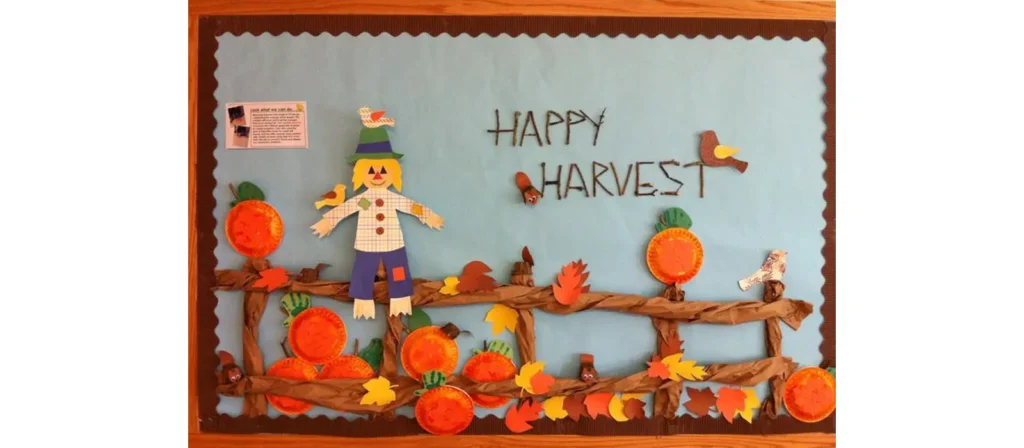
A fall theme with colorful leaves, pumpkins, and apples is ideal for teaching children about autumn. Decorate with warm colors like orange, yellow, and red, and add artificial pumpkins and dried corn. Children can explore the concept of harvest, participate in leaf rubbings, and create apple crafts. This theme provides a hands-on approach to understanding seasonal cycles and the natural world.
13. Superhero Academy
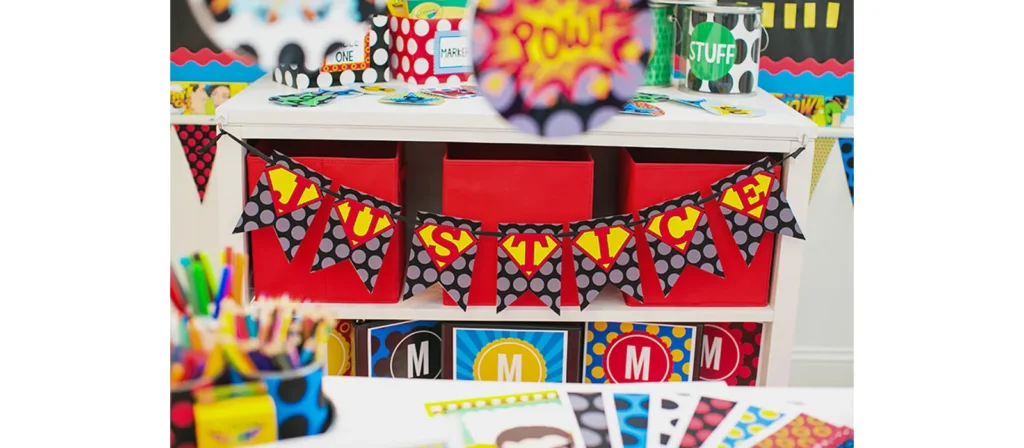
A superhero theme promotes qualities like kindness, bravery, and teamwork. Decorate with “hero training” stations and superhero capes for the children. Activities could include completing tasks to “earn” superhero badges, discussing what makes a hero, and engaging in role-play scenarios. This theme builds self-confidence, social skills, and a sense of responsibility.
14. Pirate Adventure
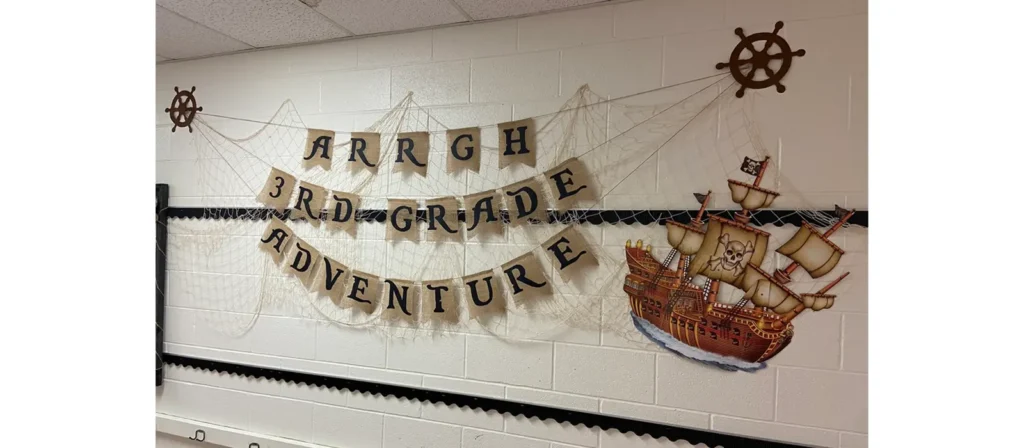
Set sail on the high seas with a pirate-themed classroom, treasure maps, pirate hats, and ship cutouts. This theme encourages problem-solving and teamwork as children work together to follow maps and find “treasure.” Crafts might include making pirate eyepatches, “treasure chests,” and learning simple navigational directions. This theme offers a fun approach to geography and basic directional concepts.
15. Fairy Tale Forest

A fairy tale theme turns the classroom into an enchanted forest with castles, fairies, and magical creatures. Children can dress up as storybook characters, participate in storytelling sessions, and create wands or crowns. Fairy tale themes allow for moral lessons, creativity, and imaginative play, making learning magical and meaningful.
16. Construction Zone
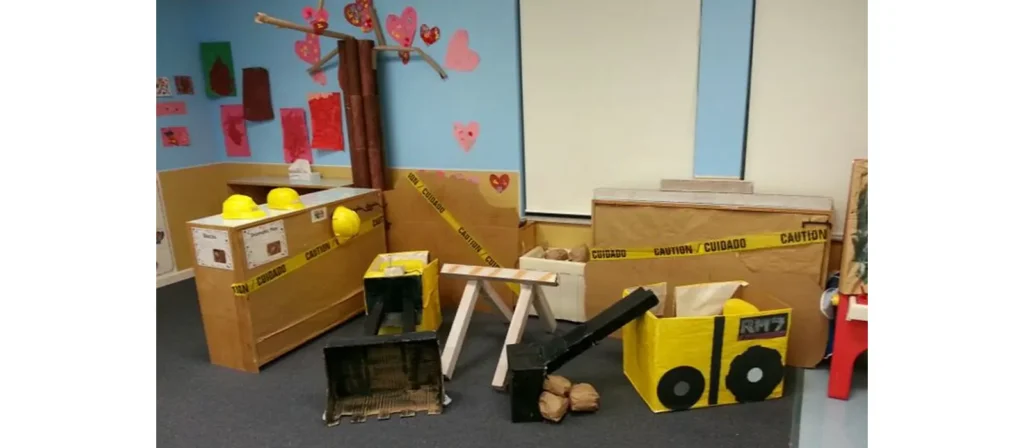
Turn the classroom into a construction site with foam blocks, toy tools, and yellow “construction” signs. This theme is perfect for teaching shapes, teamwork, and problem-solving. Kids can build structures, explore how different shapes fit together, and practice using toy tools. Decorate with cones and toy trucks to add to the realism. This theme fosters spatial awareness and fine motor development.
17. Science Lab

Introduce children to the wonders of science in a hands-on lab setup. With mini lab coats, goggles, and simple experiments, kids can become “scientists” by exploring topics like color mixing, magnets, and basic chemistry. Activities can include making “volcanoes” with baking soda and vinegar, creating color-mixing art, and examining objects under magnifying glasses. A science lab theme develops curiosity and introduces basic scientific thinking.
18. Community Helpers

Teach children about the different roles that keep a community functioning, from firefighters to doctors. Set up role-play areas with toy medical kits, fire hats, and police badges. Children can role-play different professions, learning what it means to help others. Crafts might include making community badges or drawing their favorite helpers. This theme introduces civic responsibility and community awareness.
19. Alphabet Adventure
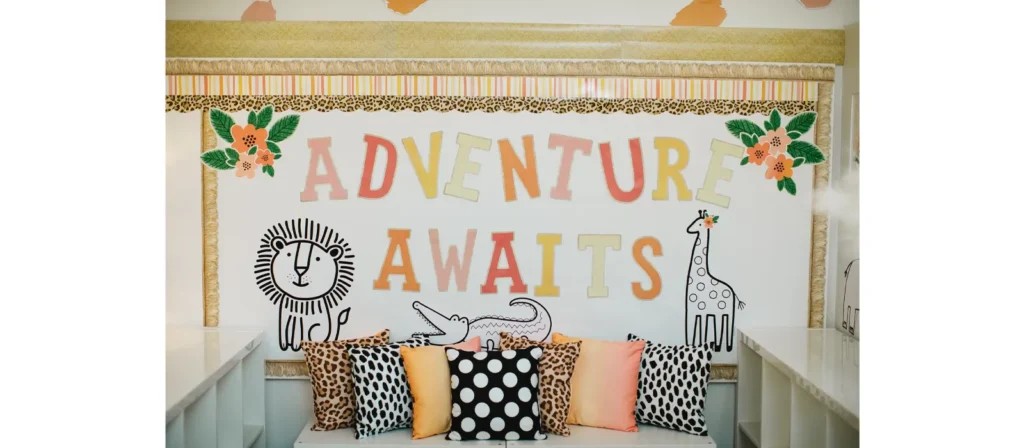
An alphabet theme focuses on early literacy, helping children recognize letters and sounds. Decorate the room with colorful letters and alphabet posters, and plan activities where kids can trace, match, and sound out letters. Let them create alphabet art or practice phonics by singing the ABC song. This theme reinforces language development and provides a foundation for reading.
20. Animal Kingdom
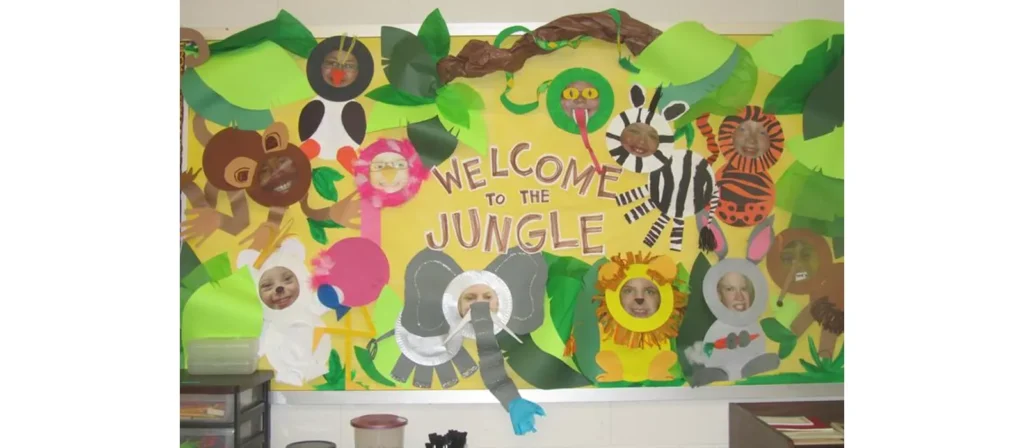
Themed as a mini-zoo, this classroom introduces children to animals worldwide. Decorate with plush animals, habitats, and facts about each animal. Students learn animal sounds, names, and characteristics. For activities, let them make animal masks, sort animals by habitats, or create an animal “exhibit” with their favorite creatures.
21. Fairy Tale Kingdom

With castles, dragons, and enchanted forests, this theme allows children to explore stories and act out their favorite characters. Decorate with images of castles, knights, and crowns. Encourage children to reenact tales, make royal crowns, or create paper “swords” and shields. This theme inspires creativity and introduces moral lessons through storytelling.
22. Doctor’s Office
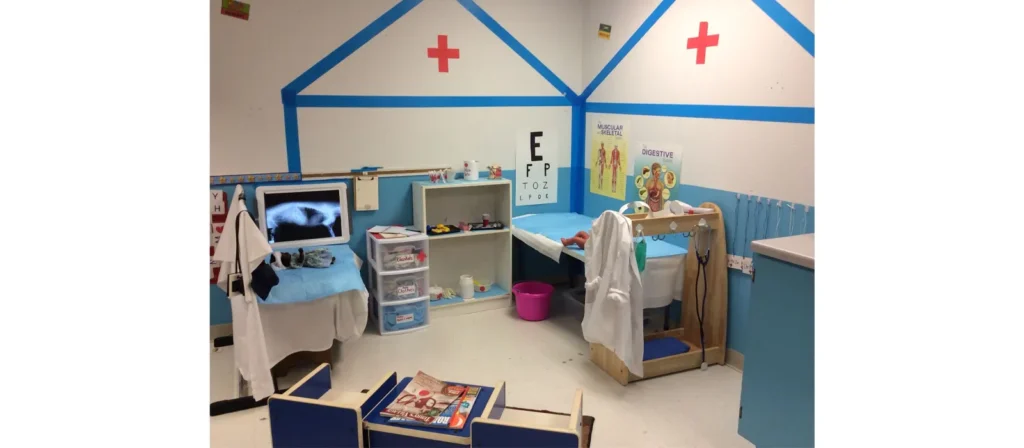
A doctor’s office theme teaches kids about health and hygiene. Set up a pretend clinic with stethoscopes, bandages, and lab coats, allowing kids to take turns playing doctor or patient. Activities include practicing handwashing, discussing healthy habits, and learning basic body parts. This theme builds empathy and introduces self-care practices.
23. Grocery Store
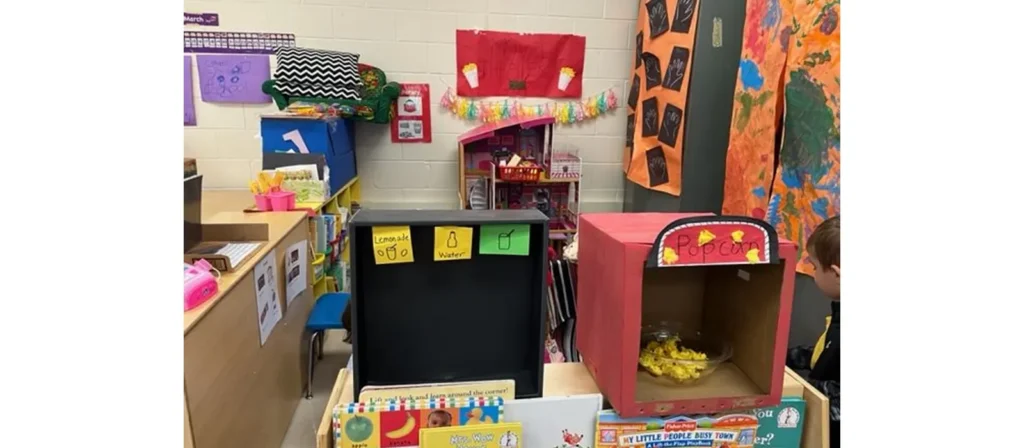
This theme turns the classroom into a mini-market where children can “shop” with toy foods and baskets. Kids can learn about nutrition, practice counting, and develop social skills by interacting as shoppers and cashiers. Set up aisles with food categories and introduce simple math through buying and selling activities.
24. Ocean Adventure

Bring the ocean to life with fish cutouts, coral reefs, and shells. Kids can explore marine life, learn about conservation, and understand ecosystems. Sensory bins with sand and shells offer a tactile experience, while activities like making paper fish and “diving” into water bins introduce them to ocean habitats.
25. Transportation Station

A transportation theme helps kids learn about vehicles, travel, and traffic safety. Set up “roads” and let kids drive toy cars, teaching them about directions, types of vehicles, and the importance of traffic signs. Crafts might include making traffic lights and paper airplanes. This theme introduces children to basic concepts of transportation and safety.
What Supplies Are Needed for Preschool Classroom Themes?
Successful preschool classroom themes rely on various supplies to create an engaging atmosphere. Below is a comprehensive list of supplies typically needed for setting up effective classroom theme ideas for preschool:
Basic Supplies
- Posters and Pictures: Visual aids, like posters of animals, planets, or community helpers, help reinforce the theme.
- Craft Supplies: Basic supplies such as construction paper, markers, glue, crayons, and scissors are essential for hands-on theme activities.
- Manipulatives: Items like blocks, counting beads, and sensory toys encourage interactive learning and make themes more engaging.
Themed Supplies
- Under the Sea Theme: Use blue streamers, fish tank decorations, and sea creature cutouts.
- Space Adventure Theme: Include glow-in-the-dark stars, planet models, and astronaut costumes.
- Garden of Growth Theme: Gather seed packets, pots, soil, and posters of flowers.
Decor and Furniture
- Themed Seating: Cushions or mats that match the theme’s color scheme
- Lighting: LED or thematic lighting, like blue lights for “Under the Sea.”
- Storage Bins: Use storage bins to organize supplies and props by theme
Interactive Elements
- Sensory Bins: Fill bins with theme-related materials (e.g., sand and seashells for a beach theme).
- Costumes: Costumes like hats or masks enhance themes such as “Superhero Academy” or “Community Helpers.”
Maintenance Supplies
- Cleaning Supplies: Child-safe cleaning products to keep materials in good condition
- Repair Materials: Tapes, glue, and extra decorations for upkeep
Transform Your Classroom with Custom Furniture Solutions
Maintaining and Updating Preschool Classroom Themes
After setting up a preschool classroom theme, regular maintenance and updates keep the theme fresh and engaging for children. Here are some practical tips for effectively maintaining preschool classroom theme sets:
Rotate Materials
Change specific materials periodically to sustain children’s interest. For example, in a “Community Helpers” theme, introduce different helper roles weekly. This strategy ensures the theme remains engaging without a total overhaul.
Involve Children
Encourage children to help add elements or make small updates to the theme. For example, updating a “Garden” theme by having them draw or plant flowers fosters a sense of ownership and helps them feel connected to their learning environment.
Use Seasonal Themes
Updating themes with seasonal changes aligns the classroom with the real world. A “Winter Wonderland” during winter or a “Spring Garden” theme when flowers bloom reinforces nature’s cycles, helping children connect with their surroundings.
Keep Decor Clean and Safe
Since preschool classroom theme decorations can accumulate dust, regular cleaning is essential to maintain a healthy environment. Check for damaged or worn-out materials, especially small items that could become choking hazards, and replace them as needed.
Conclusion
Selecting and implementing preschool classroom themes offers countless benefits, from engaging children in learning to creating a warm and inviting atmosphere. With thoughtful planning and practical maintenance, classroom theme ideas for preschool can create spaces where children explore, grow, and develop foundational skills for life.

